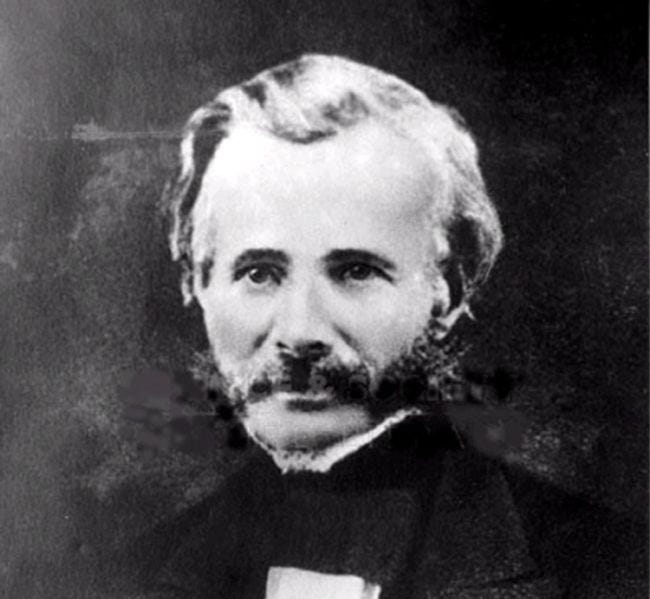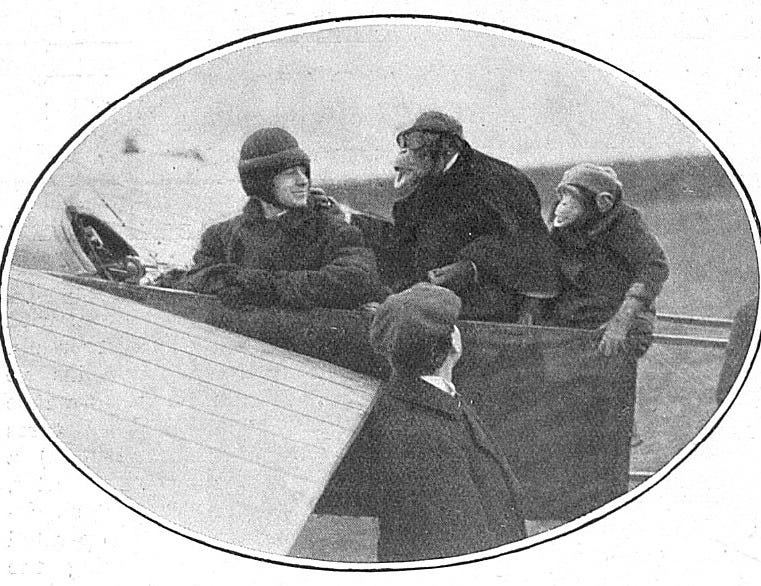In recent years there has been controversy over the short-lived Sheffield Airport, even the loss of Doncaster Sheffield Airport, however the aviation history of the city goes back a very long way. Those magnificent men in their flying machines indeed; the exciting and often crazy days of early aviation provided their fair share of interesting Sheffield stories. Was a man born in Attercliffe in 1799 really the inventor of powered flight? How did an abandoned 19th century racecourse become Sheffield’s first airfield?
The Attercliffe born man was John Stringfellow, and he is widely acknowledged as the first person to build a powered aircraft capable of flight. He moved to Chard in Somerset early in his adult life, where he worked with another inventor William Henson on the possibilities of flight, before Henson emigrated to the United States in 1848. Later that year, a steam powered model plane that Stringfellow had designed and built, first flew a few feet, and then thirty yards, in what were the first recorded powered flights. Some have said that his interest in flying began much earlier than that, and indeed started in Sheffield - his biographer Harald Penrose wrote that family tradition had recalled that in 1820, 'Mother's great uncle John flew down Brook Hill with the aid of kite wings.' (An Ancient Air, Penrose, p.22).
John Stringfellow’s 1848 model plane
Stringfellow’s working background was in lace manufacture, and he met William Henson when his work took him to Nottingham as a young apprentice. The two men were clearly very interested in the possibilities of a scientific age and how things worked - both going on to patent other inventions in different fields. They studied various species of dead birds to understand the mechanics of how they flew, and there are accounts of Stringfellow spending a train journey to London throwing various designs of paper plane out of the window to test their capabilities!
Following his earlier breakthrough he went on to work with his son, Frederick, in making further planes, one of which was exhibited at the world’s first Aviation Exhibition which was held at the Crystal Palace in 1868. Histories of Stringfellow, including Penrose’s biography, describe him as ‘John Stringfellow of Chard’ however he wasn’t only born in modern day Sheffield, but may well have started his interest in flight here. I think therefore that the city can make a legitimate claim to share in his achievements.
John Stringfellow 1799-1883
The first recorded piloted flight in Sheffield was in the summer of 1912, when Robert Slack, from Nottingham, planned to land at Lodge Moor as part of a tour exhibiting his flying skills. Thousands of people waited excitedly on the evening of Friday August 2nd, however it transpired that his take-off had been delayed by bad weather at Harrogate, and it was the following day before he duly arrived. The site of this historic event was the former Redmires Racecourse, located behind the Sportsman pub on Redmires Road - the course having had a short-lived existence in 1875/76.
Slack’s visit started an almost immediate series of flying exhibitions from the same place, as the former racecourse became Sheffield’s first airfield. In the late summer of 1912, and over the following couple of years, large crowds gathered to watch local pilots such as Marcus Manton (‘The Sheffield Boy Airman’) and JH Hall (who lived on Collegiate Crescent in Broomhall) stage exhibitions. An example of the growing showmanship was seen in November 1912, when public demand for ever increasing novelties led to Hall flying with chimpanzee ‘co-pilots’ which were provided by the ‘Sheffield Jungle’ - a kind of small zoo in the town centre.
JH Hall at Redmires with his chimp ‘co-pilots’
It is interesting to note that as late as 1914 these events were still advertised as being held at ‘Redmires Racecourse’ suggesting that some parts of the infrastructure may have remained, certainly that nobody else had taken over the site since the 1870s. The small area of flat land that suited horse racing was also ideal for planes taking off and landing, but thousands of spectators also needed accommodating, so I think it quite possible that some infrastructure such as viewing facilities may have remained in place. To think had history turned out differently the area could today either be host to a racecourse or an airport - and therefore now be a very different place indeed.
Advert for an exhibition of ‘Looping the Loop’ at the former Redmires Racecourse
The short gap between most Sheffield folk’s first glimpse of an aeroplane and regular exhibitions being given, was quickly followed by another twist in the rapidly changing story of air travel. World War One saw the first use of aircraft in battle, and the new technology was also used to bomb civilians. On September 25th 1916 the first Zeppelin raid on Sheffield caused 28 deaths, including 13 on Cossey Road in Brungreave alone. In four short years Sheffield had gone from excitedly welcoming a visiting pilot, to holding its own flying exhibitions, to burying families killed by the still new technology. Even in the modern age, when large technological advances happen year by year, this period still stands out as a dramatic, and ultimately tragic, short historical span.








A fascinating look at this aspect of Sheffield's history - I had almost no idea! Particularly interesting to read about the part played by Redmires Racecourse. Thanks for this.